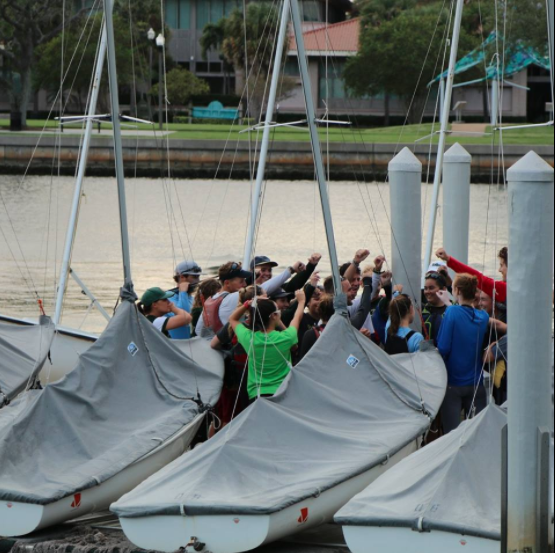By Delaney Brown
If it weren’t for the sailing team I would’ve left the university. If we’re being totally honest, I wasn’t sold when I first came to the bayside campus.
Sure, the views were great and the professors were nice, but it always felt like something was missing.
It wasn’t until I joined the women’s sailing team that the school started to feel like home to me.
The team gave me an outlet. The twice-a-week practices and workouts got me out of the dorm room and moving. The hours on the sparkling Tampa Bay water, and all the sunset sails back to shore made me fall in love with my city and my campus.
The competitions, the plane rides, the ups-and-downs of the season and all those Taco Tuesdays at Burrito Boarder gave me friends that are more like family.
My experience is in no way unique. Many other college students also found a home in collegiate athletics on campus. So why hasn’t our university given more opportunities for collegiate competition?
The women’s sailing team, the one varsity sport housed on campus, doesn’t even belong to the St. Petersburg branch of the USF system; it’s controlled and funded by the athletics department of the Tampa campus.
Meanwhile, the co-ed team, though equally competitive and demanding, is considered a club by university administration.
Though my coed counterparts are just as dedicated and successful as the members of the women’s team, there is no steady source of funding because budget is dictated by funds allocated to the waterfront by Student Government.
This means that year-to-year budget fluctuations are common and unpredictable; providing little stability for the foundation of a strong team.
The lack of financial stability also means the co-ed team has to miss out on some really cool opportunities. Though members of the co-ed team won the Kennedy Cup, the premier national collegiate offshore event, their club status and budget prevented them from competing in France, despite their best fundraising efforts.
Bringing a competitive, varsity athletics department to our university would mean that teams could pursue more opportunities to do what they love.
Though the sailing team is the largest sport on campus, the possibility of a varsity status goes beyond the sailing team.
Smaller, fledgling sports on campus like volleyball, soccer and dance would also benefit from a boost in status and funding.
The National Association of College and University Business Officers has gone so far as to say that college athletics is necessary in order to have a truly well-rounded college experience.
The effects are felt in every aspect of the college experience: school spirit increases, students become more balanced, recruitment rates go up and connections between the school and the surrounding area are more easily fostered.
For a traditionally commuter heavy school where students can often be heard softly grumbling about a lack of school pride, maybe the presence of more athletics on campus can help do the trick.



